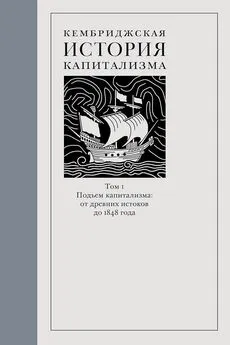Коллектив авторов История - Естественные эксперименты в истории [сборник]
- Название:Естественные эксперименты в истории [сборник]
- Автор:
- Жанр:
- Издательство:АСТ
- Год:2018
- Город:Москва
- ISBN:978-5-17-098213-4
- Рейтинг:
- Избранное:Добавить в избранное
-
Отзывы:
-
Ваша оценка:
Коллектив авторов История - Естественные эксперименты в истории [сборник] краткое содержание
Авторы сборника эссе — историки, культурологи, экономисты, — позаимствовав инструменты у математиков и статистиков, под совершенно новым углом рассматривают исторические события разных эпох и регионов. Почему между островами Тихого океана, заселенными одним и тем же народом — древними полинезийцами, — со временем возникли столь мощные культурные различия? Как статистически измерить последствия многовековой работорговли для различных африканских государств? Что общего у взрывного роста американского фронтира и бурного развития русской Сибири в конце XIX — начале XX столетий? Вот лишь некоторые вопросы, на которые пытаются ответить авторы этой необычной книги.
Естественные эксперименты в истории [сборник] - читать онлайн бесплатно ознакомительный отрывок
Интервал:
Закладка:
44
Хотя антропологи обычно называют такие социальные единицы «восходящими к» предковой, в концепции мировоззрения коренных полинезийцев они являются «восходящими от», поскольку, следуя ботанической метафоре, последнее поколение отпрысков формирует новые ветви генеалогического древа, а предки являются ее «стволом» или основанием. Таким образом, потомки «восходят» вверх по ветви.
45
Этот термин имеет несколько сложную семантическую историю: протополинезийское *kainanga приходит к ‘eina’a через серию стандартных звуковых чередований, в том числе смену протополинезийских *k и *ng на маркизский (гортанная смычка), а также добавление префикса mata .
46
См.: Patrick Kirch. Chiefship and Competitive Involution: The Marquesas Islands of Eastern Polynesia // Chiefdoms: Power, Economy, and Ideology / ed. T. Earle. New York, 1991. P. 119–145.
47
Некоторые ранние работы по маркизской археологии, имеющие ключевое значение: Ralph Linton. Archaeology of the Marquesas Islands // Bernice P. Bishop Museum Bulletin . Honolulu, 1925. № 23; Robert Carl Suggs. The Archaeology of Nuku Hiva, Marquesas Islands, French Polynesia // American Museum of Natural History Anthropological Papers . New York, 1961. № 49. Более современное обозрение маркизской археологии и истории культуры: Barry V. Rolett. Hanamiai: Prehistoric Colonization and Cultural Change in the Marquesas Islands // Yale University Publications in Anthropology. New Haven, CT, 1998. № 81.
48
Thomas. Marquesan Societies. P. 175.
49
Современные археологические исследования системы полей Кохалы: T. N. Ladefoged, M. W. Graves, and R. P. Jennings. Dryland Agricultural Expansion and Intensification in Kohala, Hawai‘i Island // Antiquity. 1996. № 70. P. 861–880; а также: T. N. Ladefoged, M. W. Graves, and M. D. McCoy. Archaeological Evidence for Agricultural Development in Kohala, Island of Hawai‘i // Journal of Archaeological Science. 2003. № 30. P. 923–940.
50
Patrick V. Kirch. Agricultural Intensification: A Polynesian Perspective // Agricultural Strategies / eds. Joyce Marcus and Charles Stanish. Los Angeles, 2006. P. 191–220.
51
Harold C. Brookfield. Intensification and Disintensification in Pacific Agriculture: A Theoretical Approach // Pacific Viewpoint. 1972. № 13. P. 30–48. См. также: H. C. Brookfield. Intensification Revisited // Pacific Viewpoint. 1984. № 25. P. 15–44.
52
E. Boserup. The Conditions of Agricultural Growth: The Economics of Agrarian Change under Population Pressure. Chicago, 1965. См. также об интенсификации посевного цикла у Керча: Kirch. Agricultural Intensification. P. 200–203.
53
Такое истощение, вызванное земледельческими практиками доконтактной эпохи, недавно демонстрировалось на примере системы суходольных полей Кахикинуи на острове Мауи. См.: A. S. Hartshorn, P. V. Kirch, O. A. Chadwick, and P. M. Vitousek. Prehistoric Agricultural Depletion of Soil Nutrients in Hawai‘i // Proceedings of the National Academy of Sciences. 2006. № 103. P. 11092–11097.
54
Общая информация о возникновении общества уровня «архаического государства» на Гавайях конца доконтактного периода: Patrick V. Kirch. From Chiefdom to Archaic State: Social Evolution in Hawaii. Provo, UT, 2005.
55
Очевидно, именно появление капитана Кука как раз в это время (вкупе с иными обстоятельствами) побудило гавайских жрецов объявить его вернувшимся богом Лоно. См.: Marshall Sahlins. Historical Metaphors and Mythical Realities: Structure in the Early History of the Sandwich Islands Kingdom. Ann Arbor, MI, 1981.
56
Marshall Sahlins. Stone Age Economics. Chicago, 1972. P. 141.
57
Об иерархии храмов в культуре древних Гавайев см.: Valerio Valeri. Kingship and Sacrifice: Ritual and Society in Ancient Hawaii. Chicago, 1985.
58
Sahlins. Social Stratification. P. ix.
59
Margaret Walsh. The American West: Visions and Revisions. New York, 2005. P. 46.
60
Здесь и далее, если не указано иначе, статистические данные цитируются по авторитетной работе B. R. Mitchell . International Historical Statistics. 4th ed. 3 vols. London, 1998.
61
Peter Bakewell. A History of Latin America: Empires and Sequels, 1450–1930. Oxford, 1997. P. 460.
62
Rory Miller. Britain and Latin America in the 19th and 20th Centuries. London, 1993. P. 106–107; The Land that England Lost: Argentina and Britain, a Special Relationship / eds. Alistair Hennessy and John King. London, 1992; Donald C. Castro. The Development and Politics of Argentine Immigration Policy, 1852–1914: To Govern Is to Populate. San Francisco, 1991; Jose C. Moya. Cousins and Strangers: Spanish Immigrants in Buenos Aires, 1850–1930. Berkeley, CA, 1998. По теме аргентинского экономического роста см.: Jeremy Adelman . Frontier Development: Land, Labor, and Capital on the Wheatlands of Argentina and Canada, 1890–1914; New York, 1994; Samuel Amaral. The Rise of Capitalism on the Pampas: The Estancias of Buenos Aires. Cambridge, 1997; Alan M. Taylor. Peopling the Pampa: On the Impact of Mass Migration to the River Plate, 1870–1914 // Explorations in Economic History. 1997. № 34. P. 100–132; A New Economic History of Argentina / eds. Gerardo della Paolera and Alan M. Taylor. New York, 2003.
63
D. C. M. Platt. Canada and Argentina: The First Preference of the British Investor // Journal of Imperial and Commonwealth History. 1985. № 123. P. 77–92.
64
Nicolas Spulber. Russia’s Economic Transitions: From Late Tsarism to the New Millennium. New York, 2003. P. 7. См. также: Igor V. Naumov. The History of Siberia / ed. David N. Collins. London, 2006; Steven G. Marks. Road to Power: The Trans-Siberian Railway and the Colonization of Asian Russia, 1850–1917. Ithaca, NY, 1991; The History of Siberia: From Russian Conquest to Revolution / ed. Alan Wood. London, 1991; James Forsyth. A History of the Peoples of Siberia: Russia’s North Asian Colony 1581–1990. New York, 1992.
65
T. S. Fedor. Patterns of Urban Growth in the Russian Empire during the 19th Century. Chicago, 1975; John Foster Fraser . The Real Siberia, Together with an Account of a Dash through Manchuria. London, 1902. P. 38, 85–87; Mark Gamsa. California on the Amur, or the ‘Zheltuga Republic’ in Manchuria (1883–1886) // Slavonic and Eastern European Review. 2003. № 81. P. 236–266; Eva-Maria Stolberg. The Siberian Frontier between ‘White Mission’ and ‘Yellow Peril’, 1890s-1920s // Nationalities Papers. 2004. № 32. P. 165–181.
66
J. P. Baughman. The Evolution of Rail-Water Systems of Transportation in the Gulf Southwest 1826–1890 // Journal of Southern History. 1968. № 34. P. 357–381; Annie Germain and Damaris Rose. Montreal: The Quest for a Metropolis. Chichester, 2000. P. 24.
67
Более полное описание конкретной «индустрии прогресса»: James Belich. Making Peoples: A History of the New Zealanders from Polynesian First Settlement to the End of the 19th Century. Auckland, 1996. Ch. 14.
68
Harry N. Scheiber. Ohio Canal Era: A Case Study of Government and the Economy, 1820–1861. Athens, Ohio, 1969. P. 121–123.
69
Alejandro Bendana. British Capital and Argentine Dependence. 1816–1914. New York, 1988. P. 143, 161.
70
Douglas McCalla. Planting the Province: The Economic History of Upper Canada, 1784–1870. Toronto, 1993. P. 207.
71
Leonid M. Goryushkin. The Economic Development of Siberia in the Late 19th and Early 20th Centuries // Sibirica. 2002. № 2. P. 12–20.
72
G. R. Hawke. The Making of New Zealand: An Economic History. Cambridge, 1985. P. 68–69.
73
E. A. Boehm. Prosperity and Depression in Australia, 1887–1897. Oxford, 1971. P. 138.
74
J. S. Holliday. Rush for Riches: Gold Fever and the Making of California. Berkeley, CA, 1999. P. 183.
75
По оценке J. G. Smith, опубликованной: Frederick H. Armstrong. City in the Making: Progress, People and Perils in Victorian Toronto. Toronto, 1988. P. 253; Rollo Arnold. New Zealand’s Burning: The Settlers’ World in the Mid-1880s. Wellington, New Zealand, 1994; W. Bruce Lincoln. The Conquest of a Continent: Siberia and the Russians. Ithaca, NY, 1994. P. 263.
76
Michael Williams. Americans and Their Forests: A Historical Geography. New York, 1989. P. 156.
77
David E. Nye. America as Second Creation: Technology and Narratives of New Beginnings. Cambridge, MA, 2003. P. 193; Williams. Americans and Their Forests. P. 344–347, 354.
78
Lance E. Davis and Robert E. Gallman. Capital Formation in the United States during the Nineteenth Century // The Cambridge Economic History of Europe / eds. Peter Mathias and M. M. Postan. Cambridge, 1978. P. 56.
79
Glen McLaren. Big Mobs: The Story of Australian Cattlemen. Fremantle, Australia, 2000. P. 115; Malcolm J. Kennedy. Hauling the Loads: A History of Australia’s Working Horses and Bullocks. Melbourne, 1992. P. 67.
Читать дальшеИнтервал:
Закладка:
![Обложка книги Коллектив авторов История - Естественные эксперименты в истории [сборник]](/books/1091796/kollektiv-avtorov-istoriya-estestvennye-eksperiment.webp)




![Коллектив авторов История - Россия в мировой истории [Учебное пособие]](/books/1078491/kollektiv-avtorov-istoriya-rossiya-v-mirovoj-istorii.webp)
![Коллектив авторов История - История гражданской войны в СССР. Том 2 [Великая пролетарская революция (октябрь - ноябрь 1917 года)]](/books/1087587/kollektiv-avtorov-istoriya-istoriya-grazhdanskoj-vojny-v-sssr-tom-2-velikaya-proletarskaya-revolyuciya-oktyabr-noyabr-1917-goda.webp)
![Коллектив авторов История - История гражданской войны в СССР. Том 1 [Подготовка Великой пролетарской революции (от начала войны до начала октября 1917 г.)]](/books/1087588/kollektiv-avtorov-istoriya-istoriya-grazhdanskoj-vojn.webp)
![Коллектив авторов История - Брежнев и Насер. Из истории советско-египетских отношений. Документы и материалы, 1965–1970 [сборник]](/books/1143321/kollektiv-avtorov-istoriya-brezhnev-i-naser-iz-istorii-sovetsko-egipetskih-otnoshenij-dokumenty-i-materialy-1965-1970-sbornik.webp)

